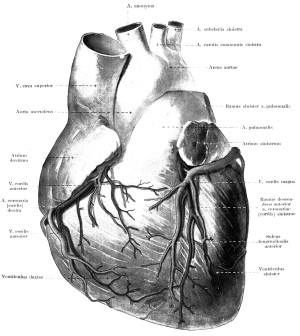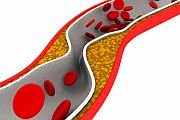- Navigating Your Midlife Crisis: Embracing New Possibilities
- City Raccoons Showing Signs of Domestication
- Mapping the Exposome: Science Broadens Focus to Environmental Disease Triggers
- One Week Less on Social Media Linked to Better Mental Health
- Your Brain Changes in Stages as You Age, Study Finds
- Some Suicide Victims Show No Typical Warning Signs, Study Finds
- ByHeart Formula Faces Lawsuits After Babies Sickened With Botulism
- Switch to Vegan Diet Could Cut Your Greenhouse Gas Emissions in Half
- Regular Bedtime Does Wonders for Blood Pressure
- Dining Alone Could Mean Worse Nutrition for Seniors
Seeing Their Clogged Arteries Can Spur Healthy Changes in Patients


Seeing images of their narrowed heart arteries may convince some heart disease patients to adopt a healthier lifestyle and take prescribed medications, a new study suggests.
“Seeing their calcified coronary arteries on the CT image was clearly an eye-opener for patients. We received comments such as, ‘It is my coronary artery and my coronary artery calcification and I am facing a real risk and challenge,’ ” said study author Rikke Elmose Mols, a nurse and Ph.D. student at Aarhus University Hospital-Skejby in Denmark.
“This may be the wake-up call patients need to take their medication and modify their behaviors to reduce their risk of having a coronary artery event,” Mols said in a European Society of Cardiology news release.
The research included 189 people recently diagnosed with early stage heart disease. Half were shown a CT image of calcium buildup on the walls of their heart arteries, a condition called coronary artery calcification.
In addition, a nurse told the patients about the link between coronary artery calcification and the increased risk of heart problems, and gave them advice about a healthy diet, exercise, quitting smoking, controlling blood pressure and taking aspirin and cholesterol-lowering statin drugs.
The other half of participants did not see images of their scans and were given standard follow-up, which included advice on reducing lifestyle and risk factors for heart disease.
The patients who saw the images of their narrowed heart arteries were more likely to switch to a healthier diet, lose weight and stop smoking. They were also more likely to continue taking statins, which led to lower cholesterol levels.
For example, just 9 percent of people who saw their arteries continued to smoke compared to 22 percent of the group given standard treatment. And just 44 percent of those who saw their blood vessels continued to eat unhealthy foods versus 64 percent of those in the usual care group.
“The results of our study suggest that visualizing their health threat motivates patients to make changes to reduce their risk. A large-scale study is needed to confirm the findings and to determine the cost-effectiveness of implementing this intervention in clinical practice,” Mols said.
The study was to be presented June 15 at a European Society of Cardiology meeting in Dubrovnik, Croatia. Findings presented at meetings are generally viewed as preliminary until they’ve been published in a peer-reviewed journal.
More information
The American Academy of Family Physicians has more about coronary artery disease.
Source: HealthDay
Copyright © 2025 HealthDay. All rights reserved.










